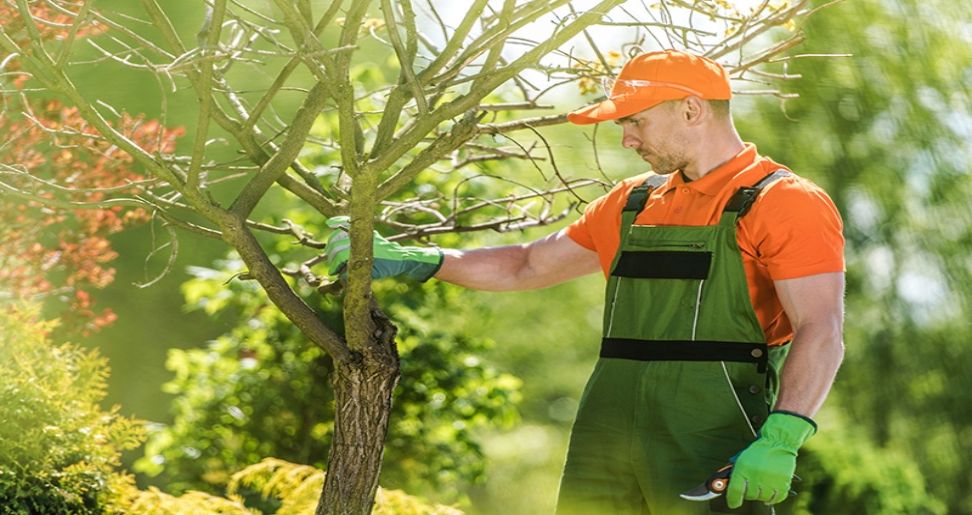Trees are invaluable assets to residential landscapes, offering beauty, shade, and even environmental benefits. However, maintaining these natural treasures requires a thoughtful approach to ensure their health and longevity. This guide outlines the key practices for effective residential tree care, emphasizing the importance of regular maintenance and professional intervention.
Understanding Residential Tree Care
Residential tree care encompasses all activities aimed at preserving the health and vitality of trees on private properties. Proper care is crucial not only for the aesthetic appeal of the landscape but also for ensuring the safety and well-being of the home environment. Neglecting tree maintenance can lead to issues ranging from unsightly appearance to hazardous conditions, making it imperative for homeowners to adopt a proactive approach.
Routine Inspections and Monitoring
Regular inspections are the cornerstone of effective residential tree care. Homeowners should visually inspect their trees at least once a season to identify any signs of disease, pest infestations, or structural issues. Look for symptoms such as discolored or drooping leaves, unusual growths, and cracks in the bark. Early detection of potential problems allows for timely intervention, which can prevent minor issues from escalating into major concerns.
Pruning and Trimming
Pruning and trimming are essential components of residential tree care. These practices not only enhance the aesthetic appearance of trees but also promote their overall health. Proper pruning helps to:
- Remove Dead or Diseased Branches: Cutting away dead or diseased branches prevents the spread of pathogens and pests.
- Improve Air Circulation and Light Penetration: Thinning the canopy allows for better air flow and sunlight, reducing the risk of fungal infections and encouraging healthy growth.
- Maintain Structural Integrity: Pruning helps to shape trees and prevent issues such as branch splitting or leaning.
It’s important to use the right tools and techniques when pruning. Employ sharp, clean pruning shears for small branches and saws for larger limbs. Avoid excessive pruning, as removing too much foliage can stress the tree and hinder its ability to photosynthesize.
Fertilization and Soil Management
Proper fertilization and soil management are crucial for the long-term health of trees. Trees often require specific nutrients to thrive, and soil conditions can significantly impact their growth. Here are key considerations:
- Soil Testing: Conduct soil tests to determine nutrient levels and pH. This information helps in selecting the appropriate fertilizer and amendments.
- Balanced Fertilization: Apply fertilizers that provide a balanced mix of essential nutrients, including nitrogen, phosphorus, and potassium. Follow recommended application rates to avoid over-fertilization, which can harm the tree and the surrounding environment.
- Mulching: Applying mulch around the base of trees helps retain soil moisture, regulate temperature, and suppress weeds. Use organic mulch such as wood chips or bark, and avoid piling it directly against the tree trunk.
Pest and Disease Management
Effective management of pests and diseases is a critical aspect of residential tree care. Common issues include insect infestations, fungal diseases, and bacterial infections. To address these challenges:
- Monitor for Pests: Regularly inspect trees for signs of pests such as aphids, mites, or borers. Look for symptoms like chewed leaves, sticky residues, or holes in the bark.
- Disease Identification: Recognize symptoms of common tree diseases, such as leaf spots, cankers, or abnormal growths. Early identification enables prompt treatment.
- Consult Professionals: For severe infestations or diseases, consult a certified arborist or tree care professional. They can recommend appropriate treatments, including targeted pesticides or fungicides.
Professional Tree Care Services
While homeowners can manage many aspects of tree care, certain tasks are best handled by professionals. Certified arborists have the expertise and equipment necessary for complex tree care tasks, including:
- Tree Removal: If a tree poses a risk to property or is beyond recovery, professional removal ensures safe and efficient execution.
- Cabling and Bracing: For trees with structural weaknesses, cabling and bracing can provide additional support and stability.
- Advanced Pruning: Complex pruning tasks, such as crown reduction or shaping, may require specialized skills and equipment.
Conclusion
Residential tree care is a multifaceted responsibility that requires ongoing attention and expertise. By following best practices for inspection, pruning, fertilization, pest management, and seeking professional assistance when needed, homeowners can ensure their trees remain healthy, safe, and beautiful for years to come. Investing in proper tree care not only enhances the visual appeal of your landscape but also contributes to the overall health of your property and environment.
Have A Look :-
- 5 Spooktacular Ways to Green Your Costume This Halloween
- Top 5 Green Mattresses for a Healthy Sleep and a Healthy Planet
- 5 Visit-Worthy Green Hotels in Canada: Eco-Conscious Luxury Awaits

